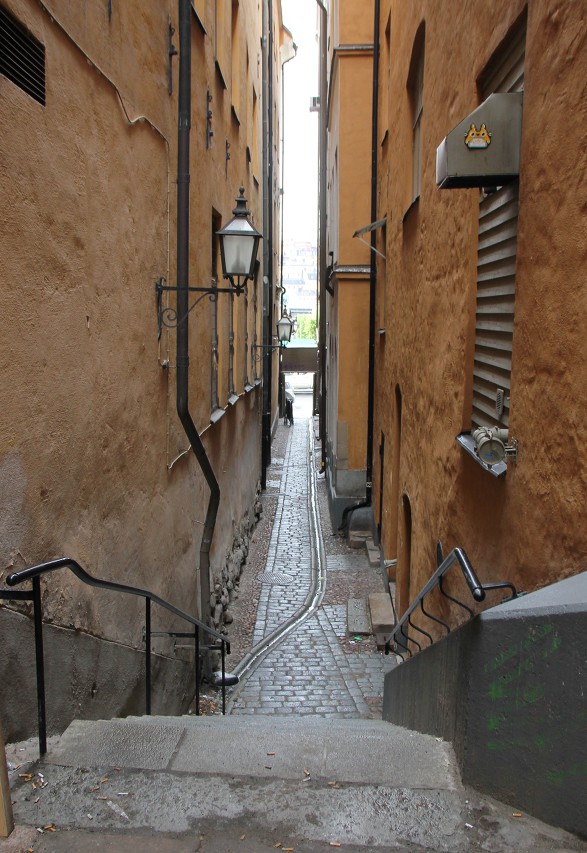Västerlånggatan, Stockholm
From the German church, walk one block down the Tyska Brinken, and come out on the main tourist street of the Old city, Västerlånggatan.
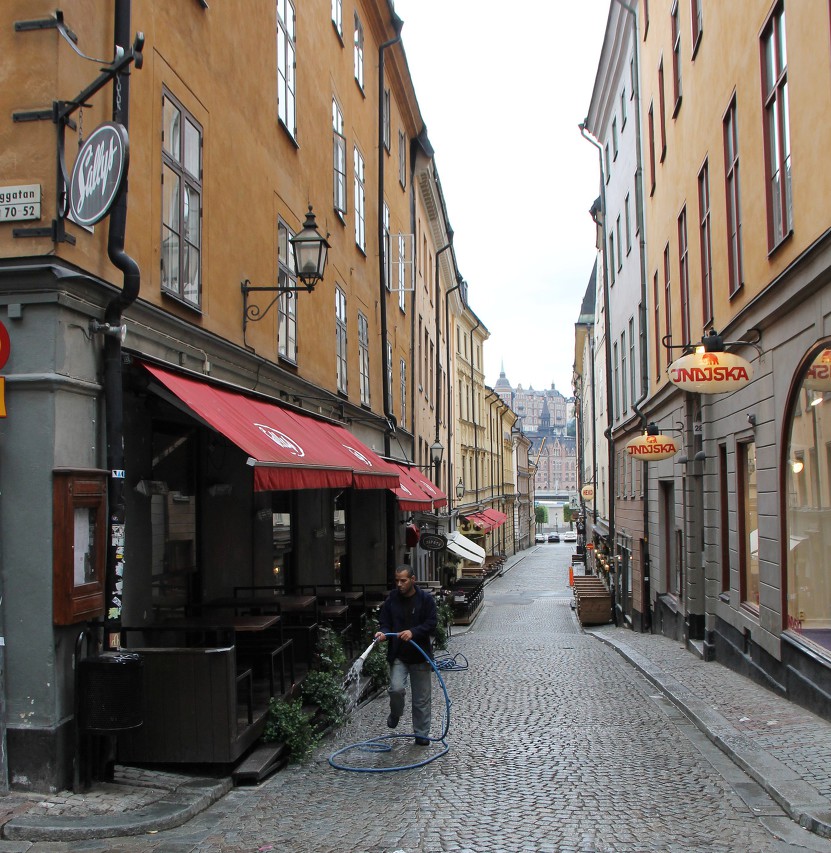
At this early hour, there were no tourists here yet, and only a lone Arab-European watering flowers at the Sallis restaurant watched us with suspicious eyes.
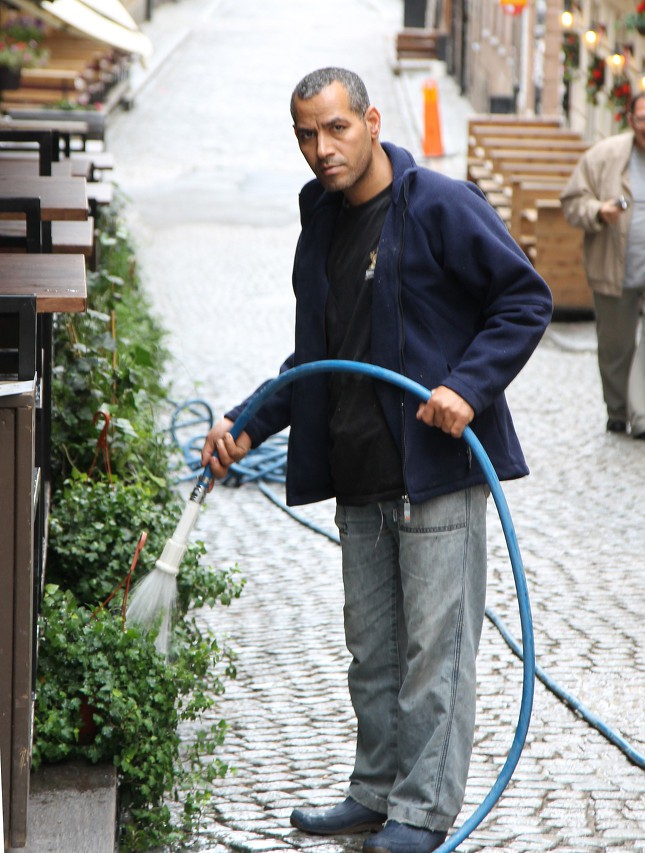
The Västerlånggatan ("West long street") was laid out in the 13th century along the fortress wall and runs through the entire Old town, from the Stallbron bridge to the Iron square. In the 15th century, the street was expanded and paved, and the construction of multi- storey buildings began here, many of which have survived to this day in an authentic form.
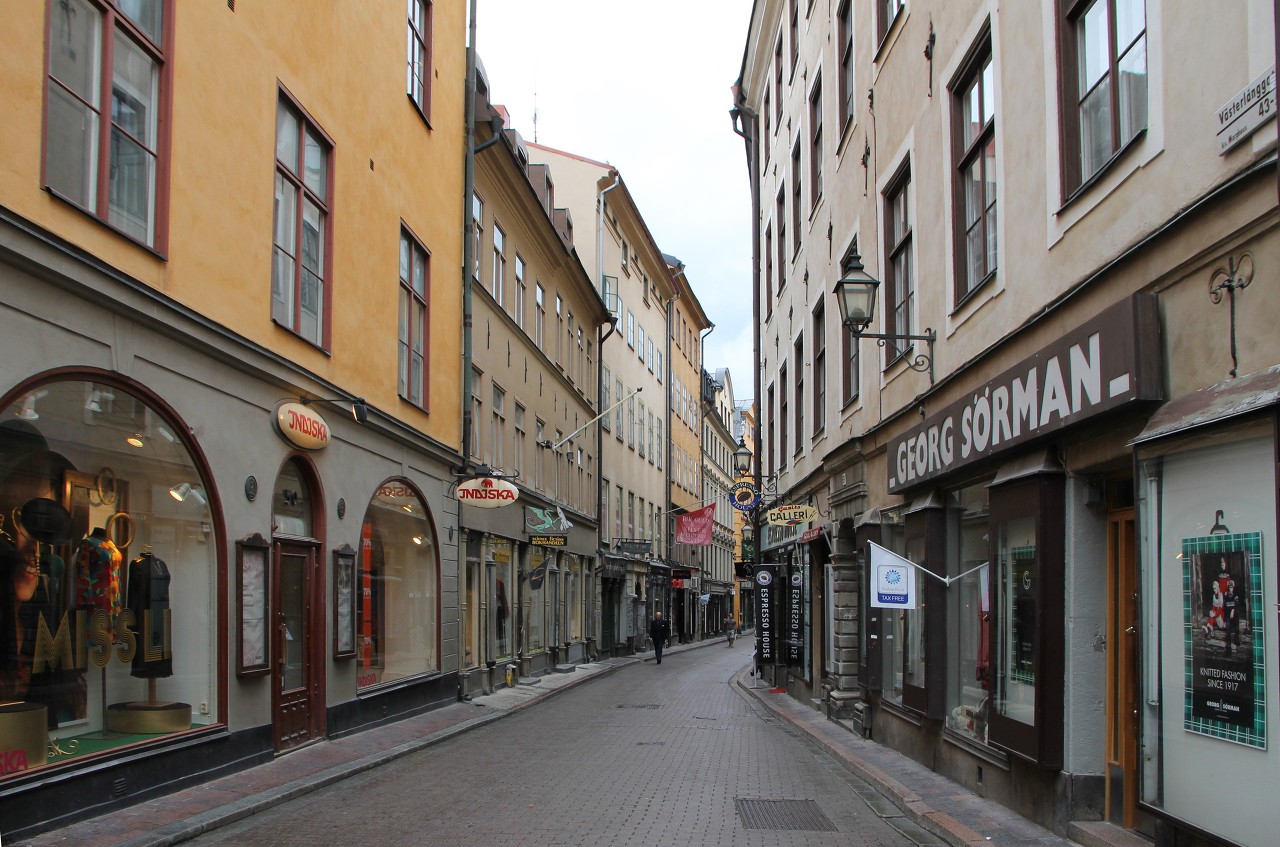
Iron and ironmongery were the mainstay of Swedish exports , so the coastal districts that overlooked Västerlånggatan were populated by iron merchants and blacksmiths. In the 17th century, by Royal decree, the forges were removed from the city walls to avoid fires, and the street was chosen for its workshops by jewelers.
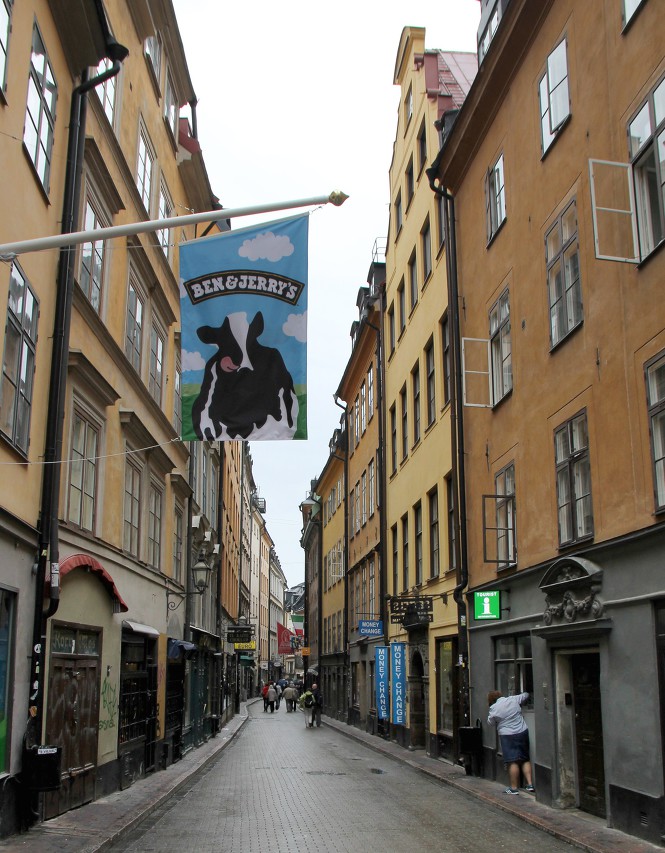
Later, shops began to open here and by the end of the century, the southern part of the street becomes the shopping center of Stockholm.At the end of the 19th century, mass trade moved to the more modern area of Norrmalm, and Gamla Stan gradually turned into a slum. However Västerlånggatan escaped this fate - she was associated with prestigious district Tingkatan by Riksbron bridge, and in the first decade of the 20th century the street got a luxurious look through the Windows of expensive boutiques.

The street is becoming popular with tourists, but this turned into an exorbitant increase in rent, and after 5-7 years, in the mid-20s, the elite trade was forced to move to the same Norrmalm. Their place was taken by restaurants and souvenir shops.
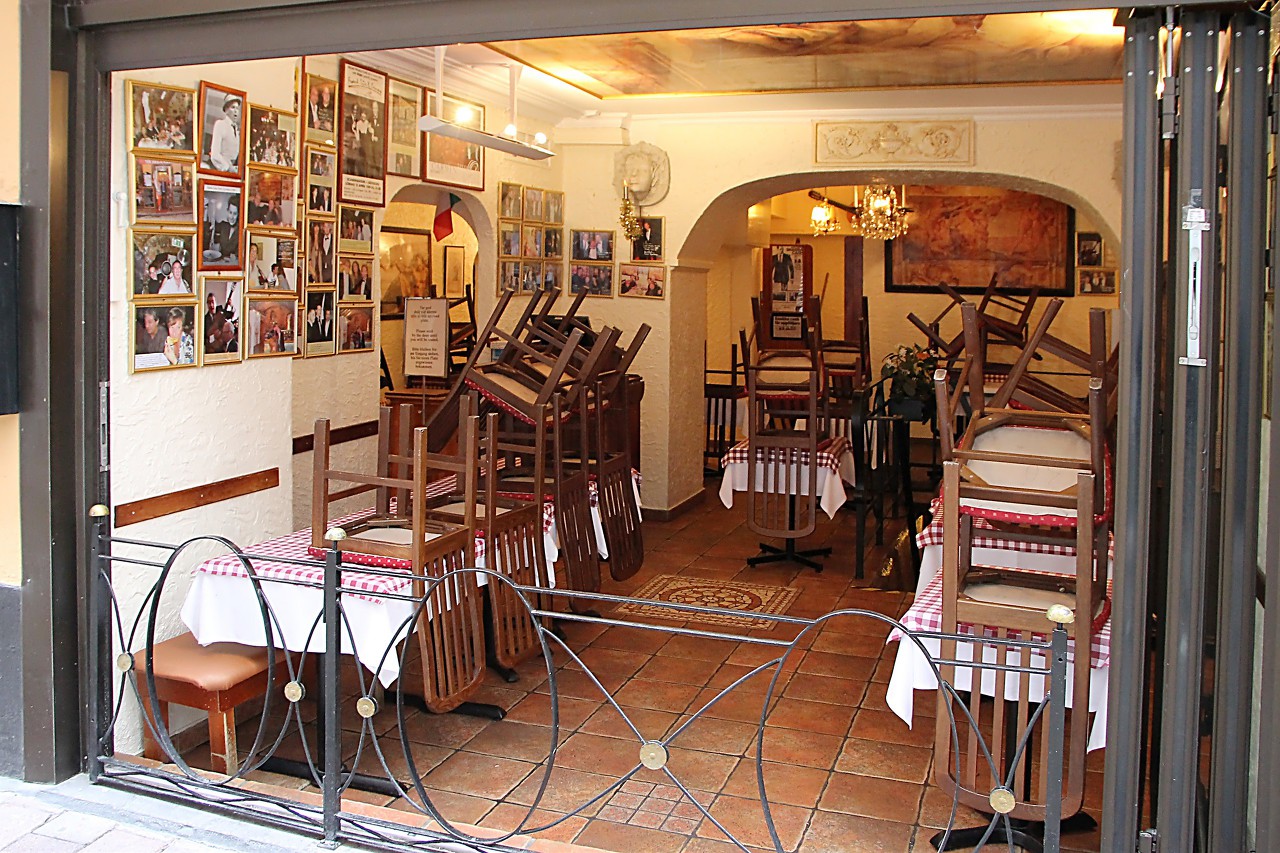
A couple of blocks away from the Iron square from Västerlånggatan to the embankment leads the lane Torgdragargränd, which is often mistaken for the narrowest street in Stockholm. But it's not, lane Mårten Trotzigs Gränd we will see later.
